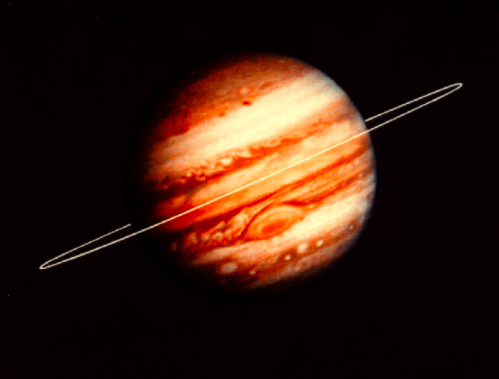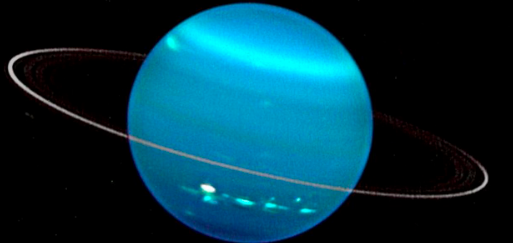Contrary to popular belief, Saturn is not the only planet in our Solar System with rings. In fact, all four jovian planets have rings, but Saturn’s are just the most noticeable because of their reflective properties. Jupiter’s rings are made of small, dark particles, which is why it is hard to detect them in photographs. Similarly, Uranus’ rings are made of dark particles which are speculated to be ice, and Neptune’s rings are dark and dusty because they thought to have formed from chipped off moons. It is interesting to note that Saturn’s rings are also made of rock and ice, but frequent collisions effectively ‘shine’ these particles, giving Saturn’s rings their reflective appearance.
Now, you might begin to wonder exactly why jovian planets have rings. As it turns out, in the Roche tidal zone of a jovian planet, the tidal forces pulling apart an object become comparable to the gravitational forces holding it together. Only relatively small objects, such as rocky particles, can avoid being ripped apart by the strong tidal forces that are found in this region. As tidal forces prevent small moonlet particles from accretting into larger moons, jovian planet’s rings are formed from continuous impacts of these small moonlet particles orbiting the equatorial plane of the planet. We know that rings were not formed from the leftovers of planetary formation because these particles are far too small to have survived for billions of years, so new particles must be continually supplied to the rings in order to replace those that are destroyed. These small moons contribute to ring particles in multiple ways. First, small, dust-sized particles are released from each tiny impact of moonlet particles. These ongoing impacts ensures that some ring particles are always present. Second, the occasional larger impact can shatter the moolet completely, creating a large supply of boulder-sized ring particles. The frequent tiny impacts then begin to slowly grind these bolder particles into tiny dust particles, and some of these particles are recycled by forming into small clumps only to be torn apart again by other tiny impacts. In short, jovian planet’s rings are formed from the gradual dismantling of the small moonlets that formed during the formation of our Solar System.










